Cameroonian Food Dishes: Basic Overview
Common Ingredients
Common Cooking Methods
Courses
Meals
Key Taste
Eating Etiquette
Meal Presentation
Culinary Festivals
Influence and Fusion
Popular Types of Cameroonian Dishes
-
Stews
In Cameroon, stews are a cornerstone of culinary tradition, often rich with a blend of meats, vegetables, and spices that simmer together to create deeply flavorful sauces.
These hearty dishes are served as central components of meals.
-
Steamed Dishes
Steamed dishes in Cameroon utilize the gentle cooking method of steam to preserve the nutrients and flavors of ingredients, ranging from vegetables to meats and fish.
-
Snacks
Snacks in Cameroon are abundant at every household and street corner, featuring ingredients from local markets.
Cameroonian dishes are one of Africa’s most diverse, thanks to Cameroon’s unique position at the crossroads of the continent and its rich mix of cultures, including Bantus, Semi-bantus, and Shuwa Arabs.
Influences from specialties of German, French fare, and English culinary treasures also impact this cuisine.
The fertile land supports a wide variety of vegetables and fruits, both domestic and imported, contributing to the cuisine’s diversity.
The cuisine also features curries, soups, fish dishes, meats on skewers, and even insects in forested regions, showcasing the country’s culinary adaptability and richness.
Want to know more about Cameroonian food? Now is your chance to find out the history and some drink pairings to have with the specialties of Cameroon.
22 Most Popular Cameroonian Dishes with Filters
Jump into 22 dishes in Cameroon with the help coming from the filter system, allowing you to enjoy these specialties in alphabetical order, tastes, key ingredients, dish types, cooking techniques, and global popularity.
Next, find out some categories of dishes available in Cameroon, with options like the most popular, national, traditional, street food, and fusion:
Fufu
- National
- Traditional
Fufu is a staple starchy dish, essential to breakfasts across Cameroon, Africa, and the Caribbean. This dough-like food, traditionally eaten with the fingers, is crafted from boiled cassava, green plantain, or cocoyam.
Sometimes mixed with cornmeal or semolina, it’s pounded and then mixed with water until it achieves a soft, spongy texture.
Bobolo
- Traditional
Bobolo, or cassava stick, is a Cameroonian dish of fermented cassava starch, traditionally encased in banana leaves and shaped into long sticks. Known for its extended shelf life, bobolo is edible for weeks at room temperature.
Nowadays, it’s relatively easy to lay hands on bobolo. Once thawed in hot water and unwrapped from its packaging, this tangy cassava dish can be savored on its own or as a complement to Cameroonian meals.
Kpwem
- Traditional
Kpwem is a distinctive Cameroonian specialty with a savory and grassy flavor. Crafted from tender cassava leaves, the dish is a great source of protein coming from the cooked leaves.
By mashing the leaves and combining them with peanut butter, locals create a stew-like concoction that pairs excellently with rice, cooked plantains, or cassava.
Eru
- Traditional
Eru soup is a culinary creation in Cameroon created using a vegetable of a similar moniker.
Originating from the Manyu region, home to the Bayangi people, this nutritious soup is crafted from eru, a mineral-rich wild vegetable known as Okok in Cameroon and Koko elsewhere in Africa. To turn these greens into a soup, they are chopped and cooked with spinach, herbs, and sometimes meat.
The result is a smooth, starchy soup that perfectly complements dishes like fufu and roasted cassava.
Achu
- Traditional
Achu, or yellow soup, is a distinctive dish from the Ngemba people of northwestern Cameroon, notable for its sneeze-like name. With a vibrant golden hue, and rich aroma, achu is best to have with fish and meat dishes.
To materialize achu, it calls for ingredients including cocoyam (taro), spices, and, uniquely, limestone. The soup’s striking yellow color is achieved through the generous use of palm oil, which is rich in color-enhancing carotenoids.
Jollof Rice
- National
- Traditional
Jollof rice is a mixed rice dish in Cameroonian cuisine, tracing its origins back to the 14th century. Today, the rice delicacy stands as a beloved traditional meal in many West African countries.
The Cameroonian version, arguably among the finest, blends rice, vegetables (such as onions, garlic, and red peppers), meat, and spices, all simmered together.
Alternatively, coastal variations often incorporate seafood, with the dish’s signature color coming from pureed tomatoes or curry powder.
Sangah
- Traditional
Sangah is a culinary creation from Cameroon that’s like a combination of a stew and porridge. It is crafted from corn, pounded cassava leaves, and palm oil.
Usually, sangah comes with corn and has a less fatty composition. It pairs excellently with rice or cooked plantains.
Ekwang
- Traditional
Ekwang is a sophisticated dish from the Bafaw people of Southwest Cameroon, showcasing the versatile use of cocoyam.
The process involves grating cocoyams into a paste and wrapping this mixture in large leaves, traditionally cocoyam leaves, though spinach or collard greens can serve as substitutes outside Cameroon.
Coming in at finger-sized, cylindrical ekwang requires time and patience, often cooked in fish stock with crayfish and spices. Commonly, ekwang is best enjoyed hot.
Banane Malaxé
- Traditional
Banane malaxé, translating to “topsy banana,” is a beloved traditional stew in Cameroon. Virtually every Cameroonian enjoys this dish at some point in their lives though it has a French influence.
Comprising unripe plantains, peanuts, crayfish, and broth (or bouillon cubes), the ingredients are fried in palm oil and then simmered in water until tender.
While delicious on its own, adding fried chicken can elevate banane malaxé.
Mbongo Tchobi
- Traditional
Mbongo tchobi is a Cameroonian stew that has a dark, blackish appearance. The stew is made with common ingredients like onions, tomatoes, meat, and aromatic spices.
However, it’s the ash from the hiomi stick of the indigenous mbongo tree that gives the stew its distinctive ebony hue. Essential to its unique flavor profile are njansa, a local nutty spice, and mbongo spice, also known as alligator pepper, which adds an intensely spicy aroma.
Cornchaff
- Traditional
Cornchaff is a hearty, one-pot dish beloved in parts of Cameroon. Contrary to what its name might suggest, cornchaff is not related to corn’s chaff but is a savory blend of beans, corn, onions, and robust spices.
For those seeking a richer taste, additions like crayfish, meat, and chicken broth can enhance the dish. Enjoyed not only in Cameroon but also in Nigeria, Ghana, and Congo, Cornchaff stands out as a comfort food.
Ndolé
- National
- Traditional
Ndolé is a national dish of Cameroon, essential to the culinary landscape, and a staple at major celebrations like National Day, Christmas, and New Year.
Named after its key ingredient, ndoleh (West African bitter leaves), this savory dish also features melon seeds, and either meat or fish, all simmered together to blend their flavors perfectly.
Commonly served with fufu, bobolo, or boiled plantains, ndolé offers a refreshingly tangy counterpoint to the richer, meat-heavy dishes.
Kondre
- Traditional
Kondre is a traditional Cameroonian stew that highlights the country’s reliance on plantains. This simple yet flavorful recipe involves simmering tomato puree, spices, and meat, followed by the addition of chunky green plantains.
Originating from the northern tribes, kondre has become a popular dish across the country, frequently prepared for various special occasions, including weddings and funerals.
Poulet DG
- Traditional
Poulet DG is a Cameroon dish named after the French term for high-ranking officials, “Directeur Général.” It combines fried plantains, grilled chicken, and vegetables in a savory tomato sauce.
Once exclusive to the elite, it’s now a cherished meal across all social classes, celebrated for its rich flavors and simple preparation.
Soya
- Street Food
Soya is Cameroon’s street food of skewered meat. Predominantly made from beef or goat meat, the flavor of soya lies in marinating tender meat cuts with peppery spices, and then grilling them over charcoal for a smoky flavor.
The Hausen people, renowned for their soya preparation skills, possess the secret to crafting this juicy, spicy delicacy. Ideally, soya is accompanied by raw onions and grilled plantains.
Poisson Braisé
- Street Food
- Traditional
Poisson braisé is a standout dish among the Duala (or Sawa) people of Cameroon’s coastal Littoral Province. known for its umami-rich flavor, this dish centers on grilling gutted fish over charcoal.
The essence of poisson braisé lies in its seasoning with distinctive African spices such as pèbè (false nutmeg), country onion (a rainforest spice), or white pepper, which elevate the fish’s flavor.
Typically served with bobolo, fufu, or cooked plantains, this grilled fish dish is a celebration of rich flavors.
Kwacoco
- Traditional
Kwacoco is a traditional Cameroonian dish crafted from pureed cocoyam, a root crop originating from Central and South America. It’s then wrapped and steamed in banana leaves, becoming a cherished item among various ethnic groups in Cameroon, including the Kwe people.
The pairing of kwacoco with banga forms an essential part of the diet in rural Cameroonian communities, providing vital fats and carbohydrates.
Koki
- Traditional
Koki is a traditional Cameroonian cake, often prepared for newlyweds. The sweet treat resembles a moist, pudding-like cake and is commonly found at food stalls and especially at wedding parties.
To make koki, peeled peas are pureed with spinach and herbs using a food processor, then the mixture is wrapped in plantain leaves and steamed.
Available in various sizes, often as small as a golf ball, this rich, earthy steamed cake is typically enjoyed with boiled plantains.
Puff-Puff
- Street Food
Puff-puff is a popular Cameroonian street snack offering a crispy, golden exterior and a soft, spice-rich interior. This deep-fried delicacy mainly consists of yeast-raised flour dough mixed with water, sugar, and salt.
Commonly paired with corn porridge, puff-puff also find its perfect match in a sautéed mixture of beans and tomatoes.
Accra Banana
- Street Food
Accra banana is a must-try Cameroonian snack found in every corner of the country, offering a crispy texture and rich flavor. This divine dessert is crafted from a creamy batter of mashed bananas, cornmeal, baking soda, and flour.
Once the dough rises, it’s deep-fried until golden brown, ready for serving anyone.
Egusi Pudding
- Traditional
Egusi pudding is a particularly celebrated dish in Cameroon for its use of protein-rich seeds from melon and pumpkin. This renowned dish involves blending ground egusi seeds with water, spices, and shredded meat.
Once the mixture is smooth, it’s then wrapped and steamed in banana leaves until it becomes soft and fragrant. Traditionally served with fufu, bobolo, and boiled plantains, egusi pudding is a prized delicacy for special occasions.
Interestingly, some believe the quality of egusi pudding, from its taste to the neatness of its wrapping, can predict the success of a marriage.
Chin Chin
- Fusion
- Street Food
Chin chin is a Cameroonian snack, blending wheat flour, milk, eggs, and black-eyed peas into a crunchy delight. Unique to Cameroonian versions is the addition of ground nutmeg, infusing a slightly spicy and aromatic taste.
Available in various sizes and shapes, from chips to donut-like forms, chin chin offers a plethora of choices to satisfy any craving.
What Is the History of Cameroonian Food?
The history of Cameroonian food is deeply intertwined with the country’s diverse cultural heritage and geographical position. This rich history is marked by:
In case you want to taste more flavors from Cameroon, enjoying them with some fine refreshments is the way to go, taking your experience to another notch.
What Cameroonian Dishes to Pair with Beverages?
To pair these dishes with other refreshments in Cameroon, you should consider the following options:
Share these dishes with your friends and loved ones to popularize the merits of delectable Cameroonian dishes. Don’t forget the comment section is open to anyone with great ideas to tell.



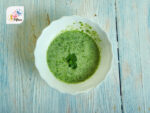
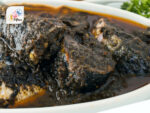
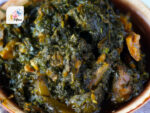
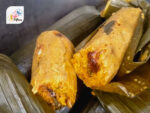
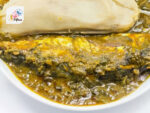
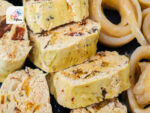




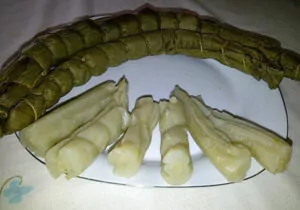
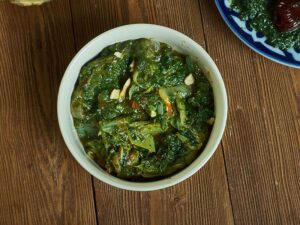
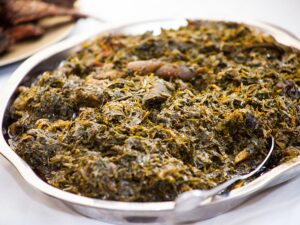
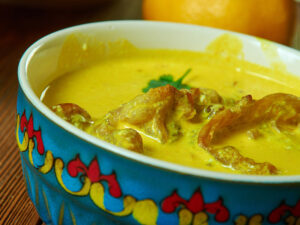
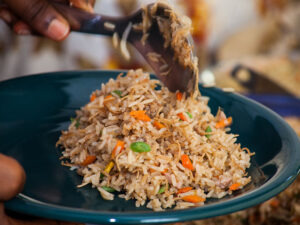
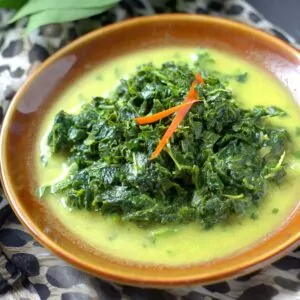
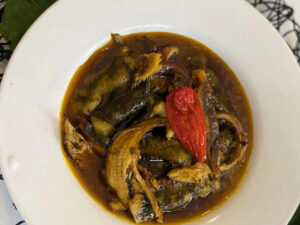
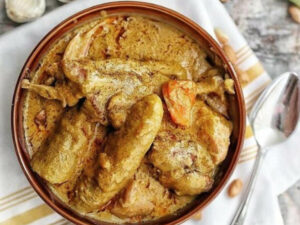
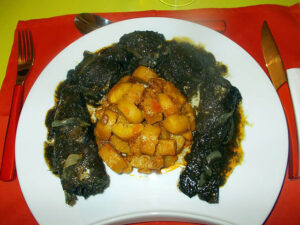
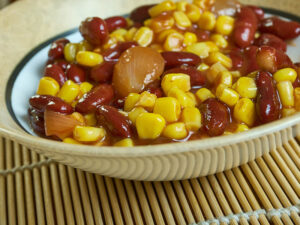
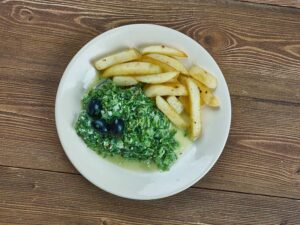
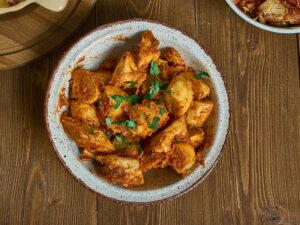
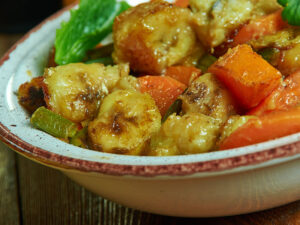
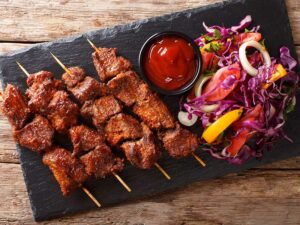
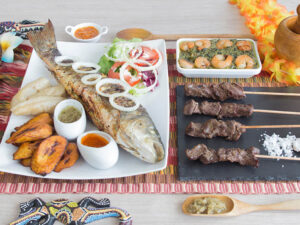
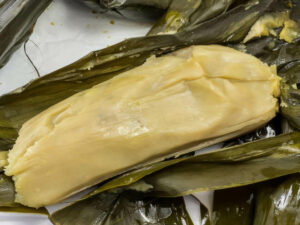
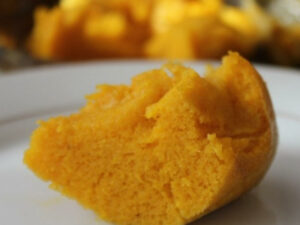
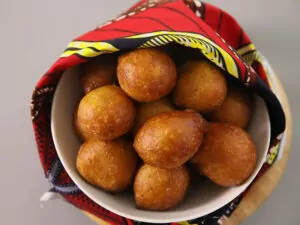
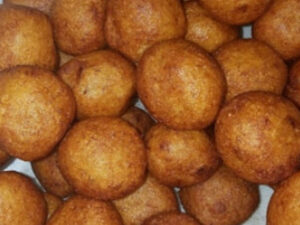
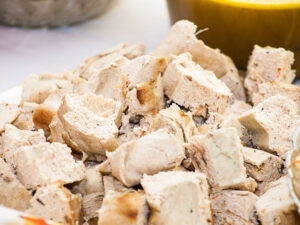
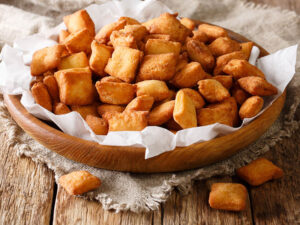
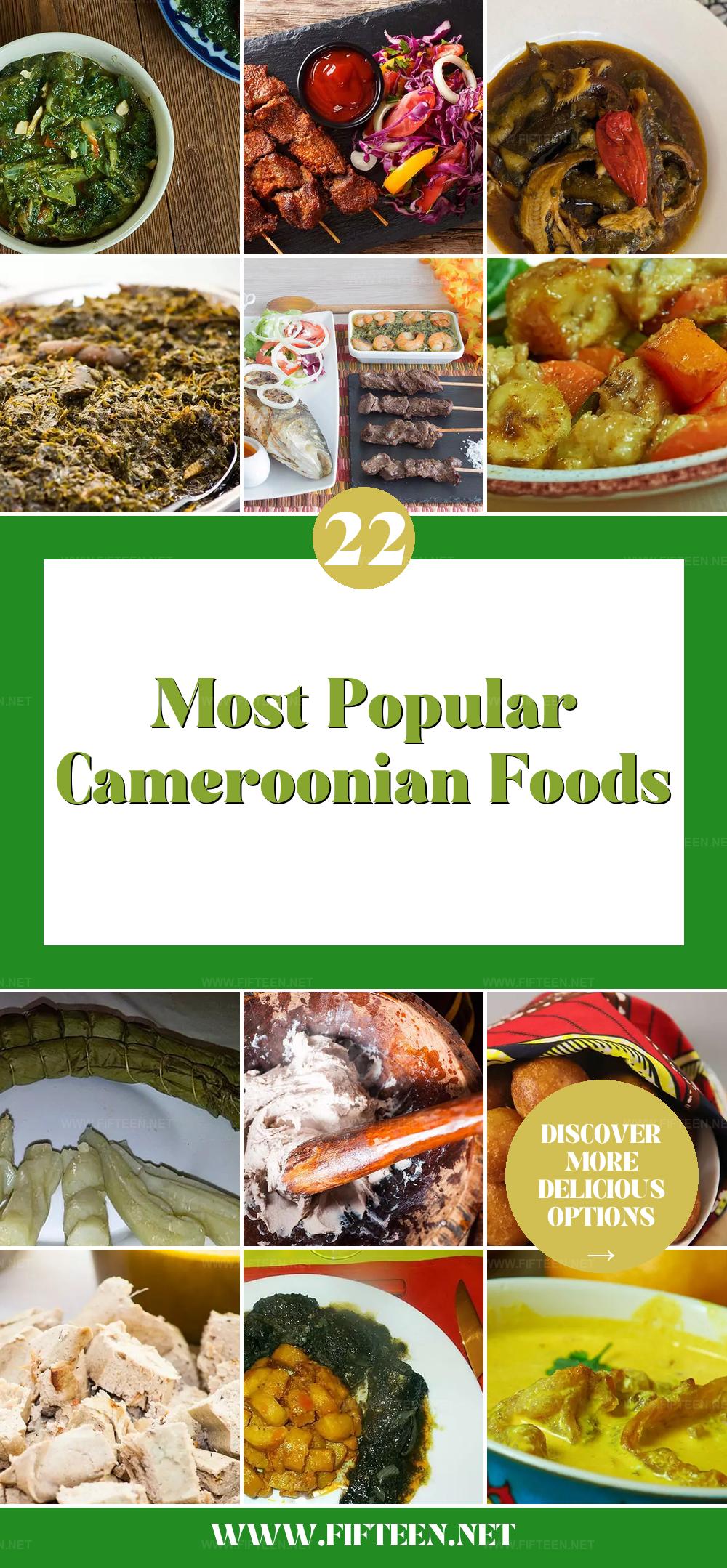
Jamie Scott
Editor in Chief, Senior Content Writer
Expertise
Home Cooking, Meal Planning, Recipe Development, Baking and Pastry, Food Editor, Cooking-video Maker, Western Food Evaluation Expert
Education
Le Cordon Bleu College of Culinary Arts
Local Community College, New York, NY
Jamie Scott is a skilled culinary expert and content creator specializing in Western cuisine. With over 15 years in the culinary field and formal training from Le Cordon Bleu, Paris, Jamie deeply understands how to blend nutrition with delicious flavors. His passion for cooking matches his commitment to making healthy eating accessible and enjoyable.
On Fifteen.net, Jamie brings a fresh perspective to classic dishes and beverages, offering readers insightful recipes, cooking tips, and a fresh view on meal planning that emphasizes taste, health, and simplicity.